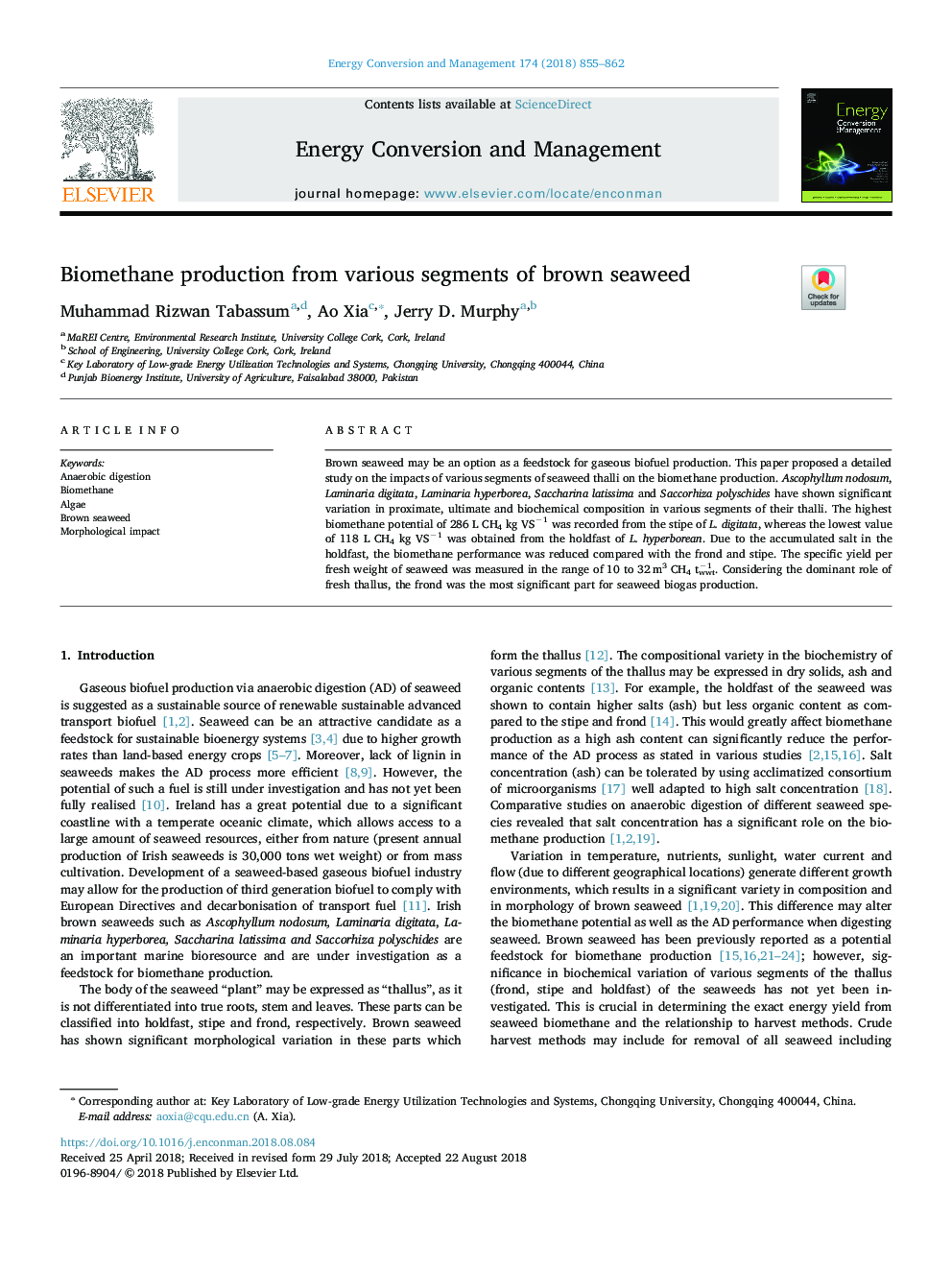| Article ID | Journal | Published Year | Pages | File Type |
|---|---|---|---|---|
| 11003807 | Energy Conversion and Management | 2018 | 8 Pages |
Abstract
Brown seaweed may be an option as a feedstock for gaseous biofuel production. This paper proposed a detailed study on the impacts of various segments of seaweed thalli on the biomethane production. Ascophyllum nodosum, Laminaria digitata, Laminaria hyperborea, Saccharina latissima and Saccorhiza polyschides have shown significant variation in proximate, ultimate and biochemical composition in various segments of their thalli. The highest biomethane potential of 286 L CH4 kg VSâ1 was recorded from the stipe of L. digitata, whereas the lowest value of 118 L CH4 kg VSâ1 was obtained from the holdfast of L. hyperborean. Due to the accumulated salt in the holdfast, the biomethane performance was reduced compared with the frond and stipe. The specific yield per fresh weight of seaweed was measured in the range of 10 to 32â¯m3 CH4 tâ1wwt. Considering the dominant role of fresh thallus, the frond was the most significant part for seaweed biogas production.
Related Topics
Physical Sciences and Engineering
Energy
Energy (General)
Authors
Muhammad Rizwan Tabassum, Ao Xia, Jerry D. Murphy,
